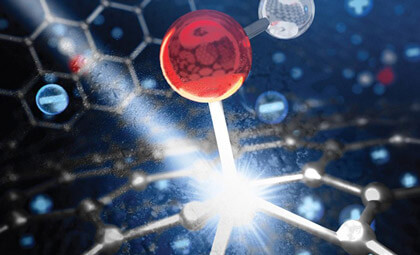
Working with the Molecular Foundry’s David Prendergast, as well as researchers at the Advanced Light Source, users from Lawrence Livermore National Laboratory have identified electrical charge-induced changes in the structure and bonding of graphitic carbon electrodes that may one day improve the way energy is stored in electrical energy storage systems, such as batteries and supercapacitors.
The team developed a new X-ray adsorption spectroscopy capability that is tightly coupled with a modeling effort at the Foundry to provide key information about how the structure and bonding of graphitic carbon supercapacitor electrodes are affected by polarization of the electrode – electrolyte interfaces during charging. This allowed them to detect the complex, electric-field induced changes in electronic structure that graphene-based supercapacitor electrodes undergo during operation.

